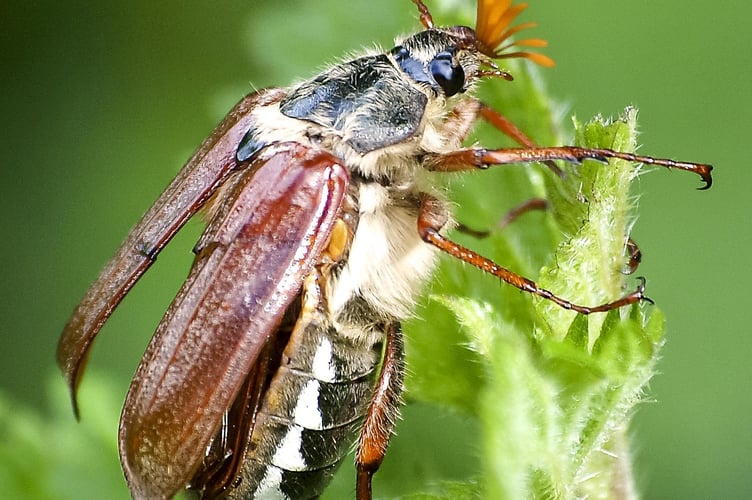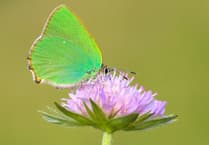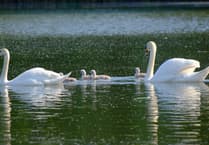
Have you spotted a big buzzy beetle, spooky-looking with large “fans” on the sides of its head?
On social media every year around this time I see people asking about “scary” insects seen flying around outdoors, sometimes in homes. Last week a friend told me he’d seen one and had to look up what it was.
These fascinating creatures are cockchafers, also commonly known as “doodle-bugs” and “May bugs”, the latter because they appear in large numbers during spring, although cockchafers are not bugs, nor do they fly only during May.
The cockchafer is a large, flying beetle, about 3cm long. It is most often seen at dusk, flying noisily around the tops of trees and bushes, sometimes swarming around streetlights and bumping into window panes.
I vividly recall when my wife and I first encountered cockchafers, some 40 years ago. Every evening just after sunset, swarms of the insects would fly noisily around the tops of small trees on the campsite in Devon where we were holidaying.
Cockchafers are never found in the part of eastern England from which we came and I had only a moderate interest in nature at the time, so I had to look them up in our trusty “Collins’ Complete Guide to British Wildlife” which was our handbook during every country walk!
The cockchafer is the UK's largest scarab beetle – a group which includes dung beetles and chafers. It is unmistakeable, with brown legs and wing cases, a pointed “tail” and fan-like antennae. If you’re able to look closer you can determine their sex, as males have seven “feathers” to each antennae while females have six.
Cockchafers spend most of their lives (three to four years) growing underground as larvae, or grubs. The grubs are white and C-shaped with six legs and reddish-brown heads. The grubs are sometimes called rookworms, as they are prized by corvids.
The larvae eat the roots of a variety of plants; in large numbers they can damage pastures and crops. They were a serious agricultural pest until pesticides were used to control them during the second half of the last century. This reduced their numbers but they are now recovering.
Adult cockchafers (beetles with wings) emerge in spring and only live for about five or six weeks, when they look for a mate and fly into the tree tops to feed on leaves.
Females lay their eggs in the soil, where the larvae remain after hatching. The disturbing sharp point at the tip of a cockchafer's abdomen isn’t a sting, but a pygidium, used by females to push their eggs deep into the soil.
Insects usually need to sniff out two things: food sources and sexual partners.
In common with other insects, cockchafers detect volatile compounds (what we might call odours) by means of chemosensors in their antennae.
The antennae of cockchafers have a large surface area available for chemosensors, which greatly increases their ability to detect volatile compounds released by leaves when these beetles feed on them. In this way cockchafers locate food sources – and potential breeding partners!
Mating behaviour is controlled by pheromones. It’s suggested that, as males have seven club segments in their antennae while females have only six, males are additionally sensitive to pheromone scents produced by females.
Cockchafers can be scary when seen for the first time, but they’re totally harmless – just enjoy seeing them!
-Jon-Hawkins.jpeg?trim=0,270,0,210&width=752&height=500&crop=752:500)




Comments
This article has no comments yet. Be the first to leave a comment.